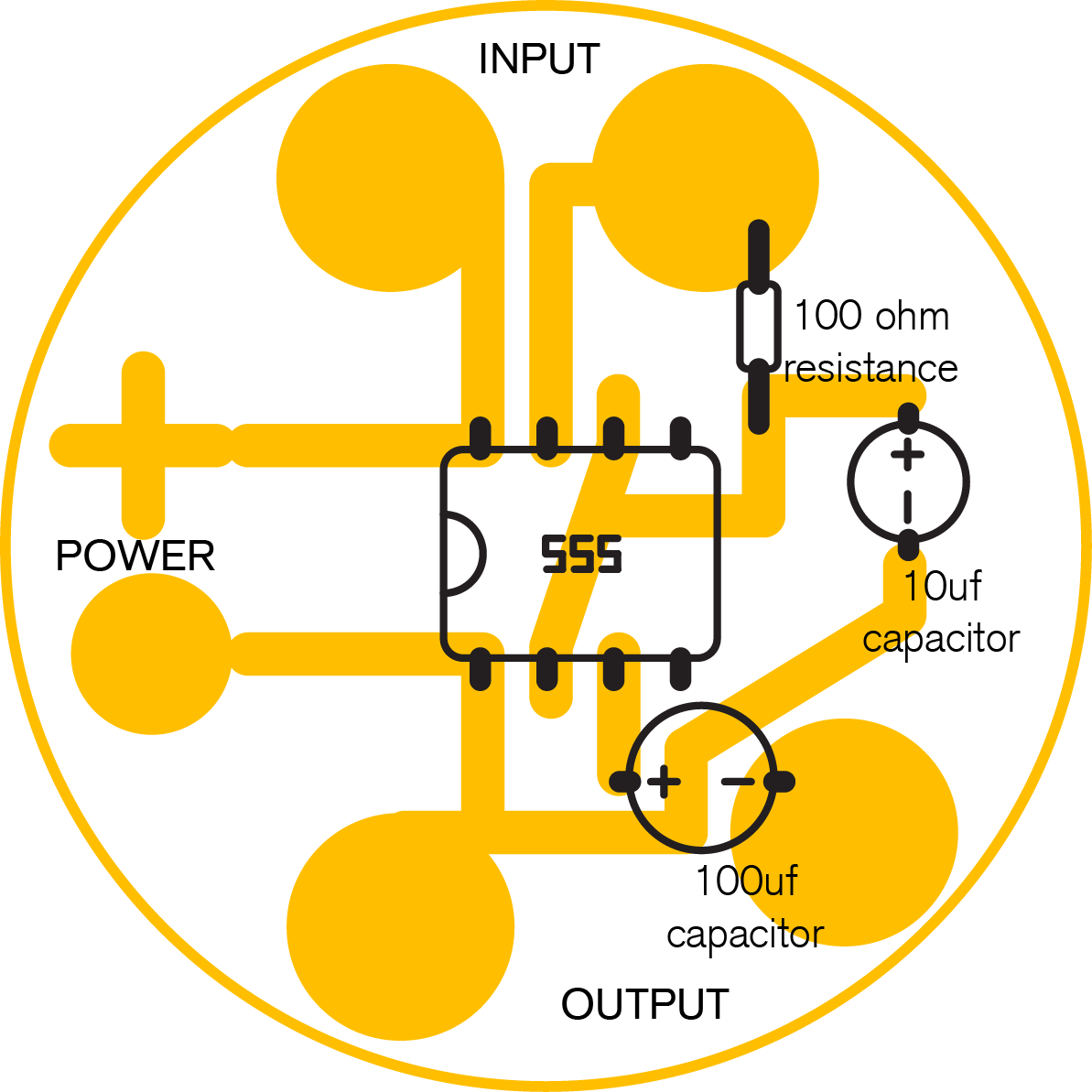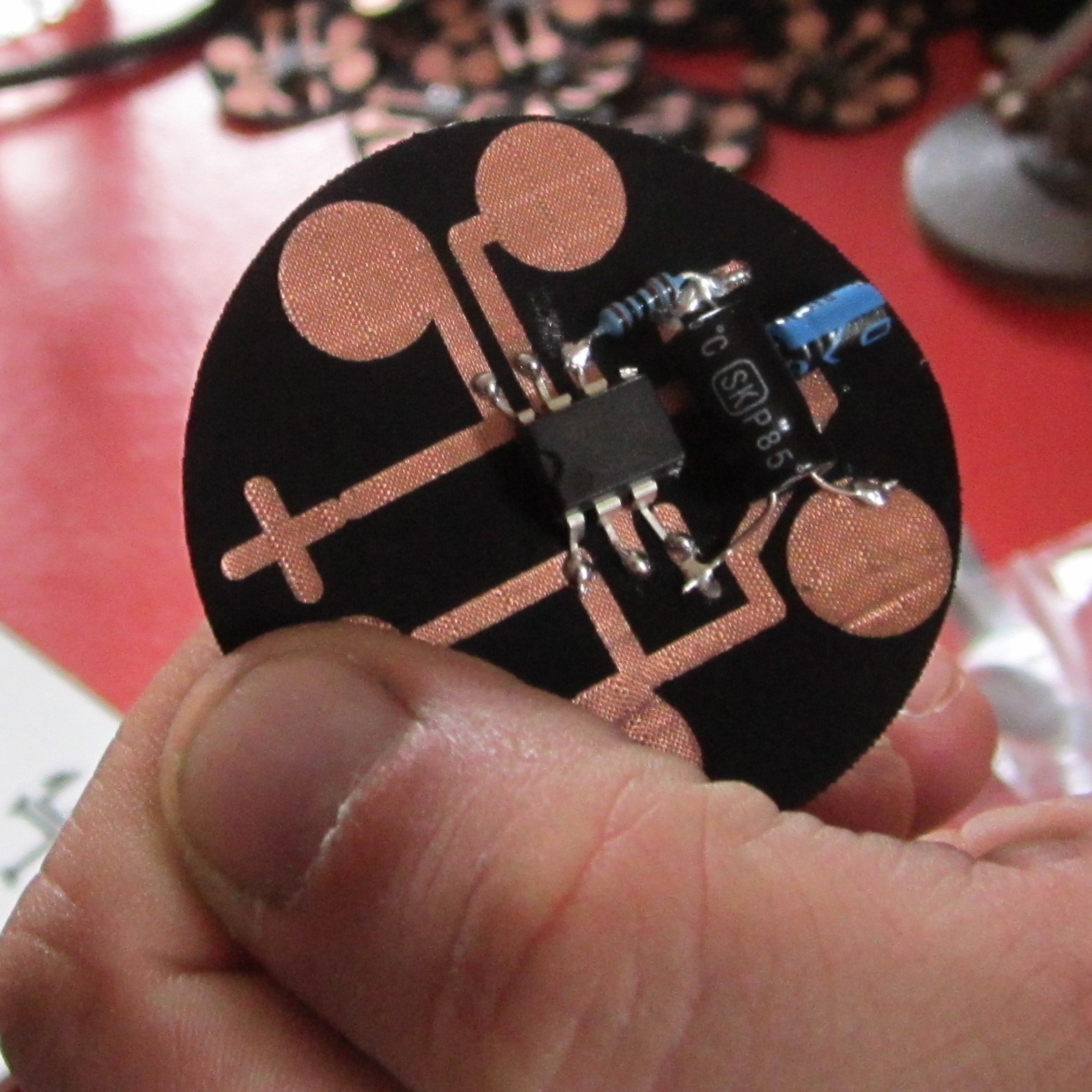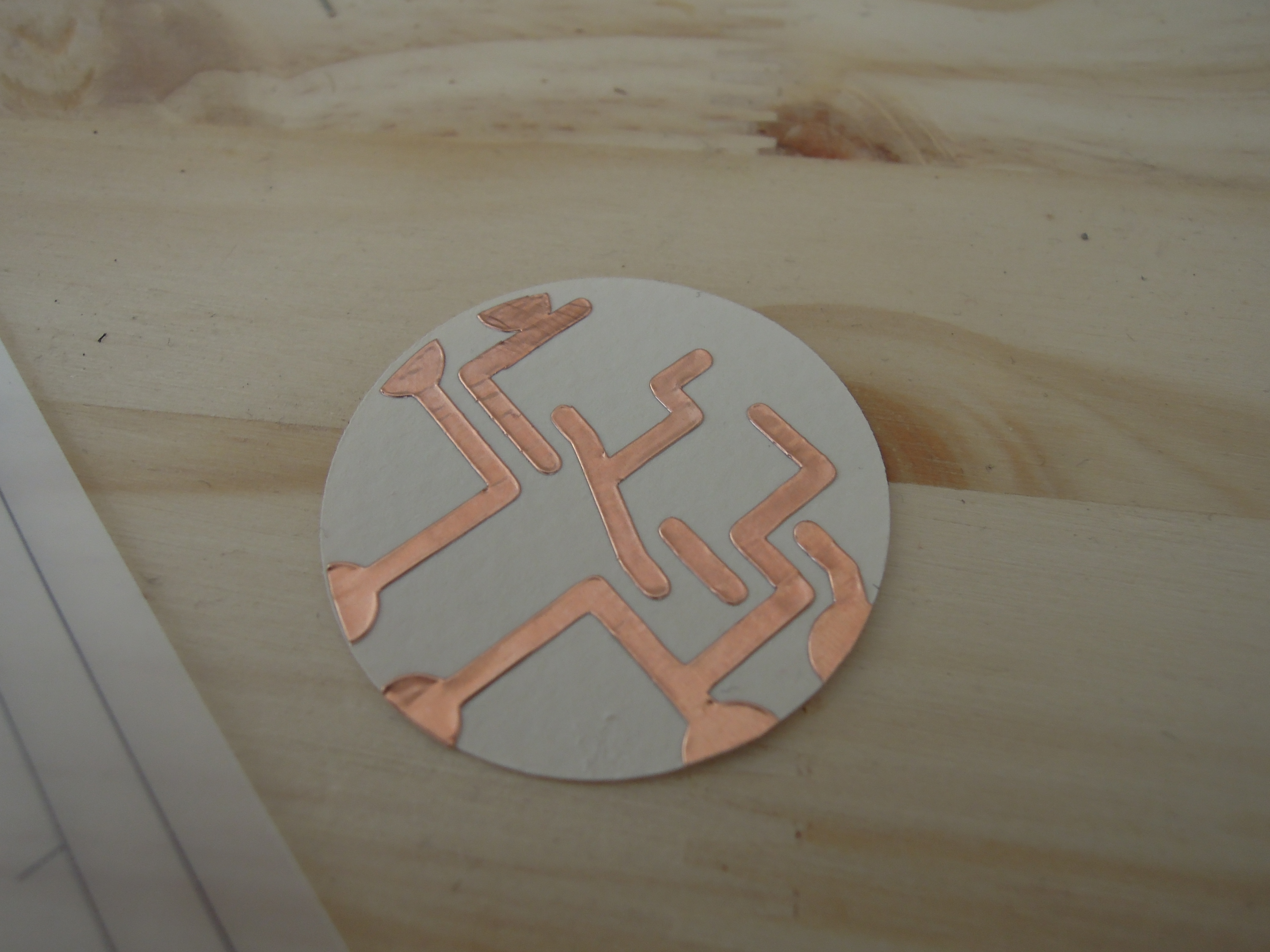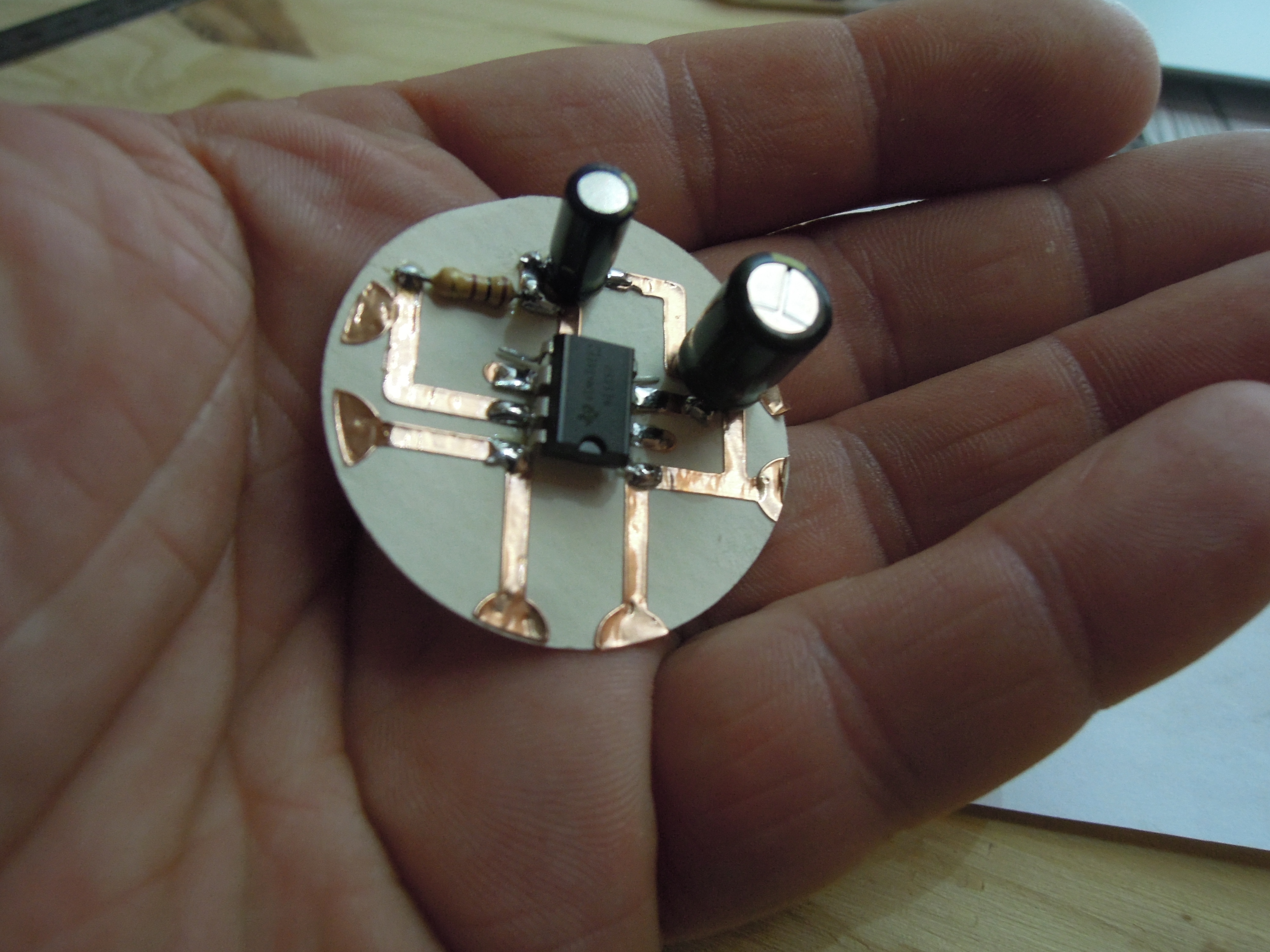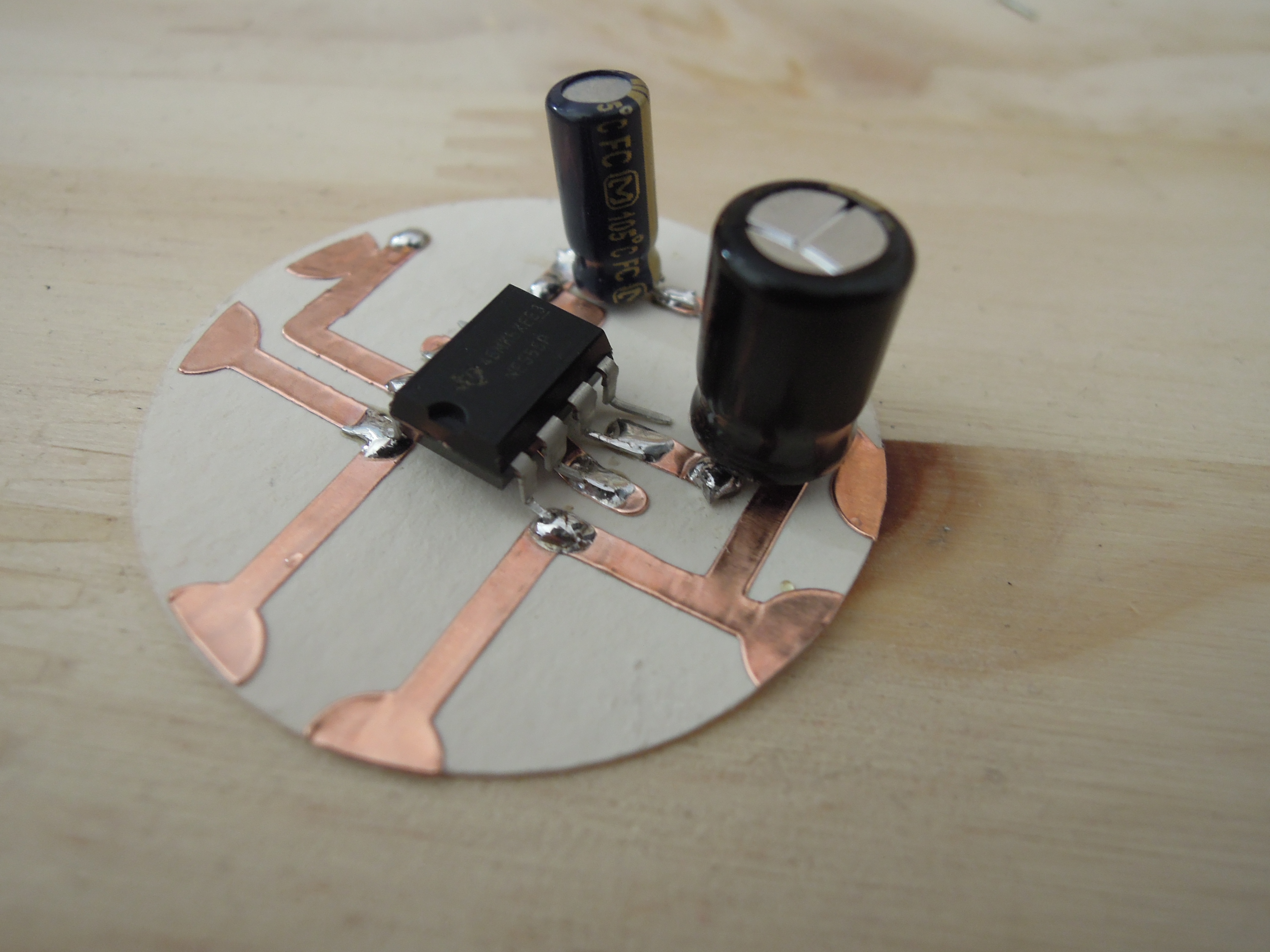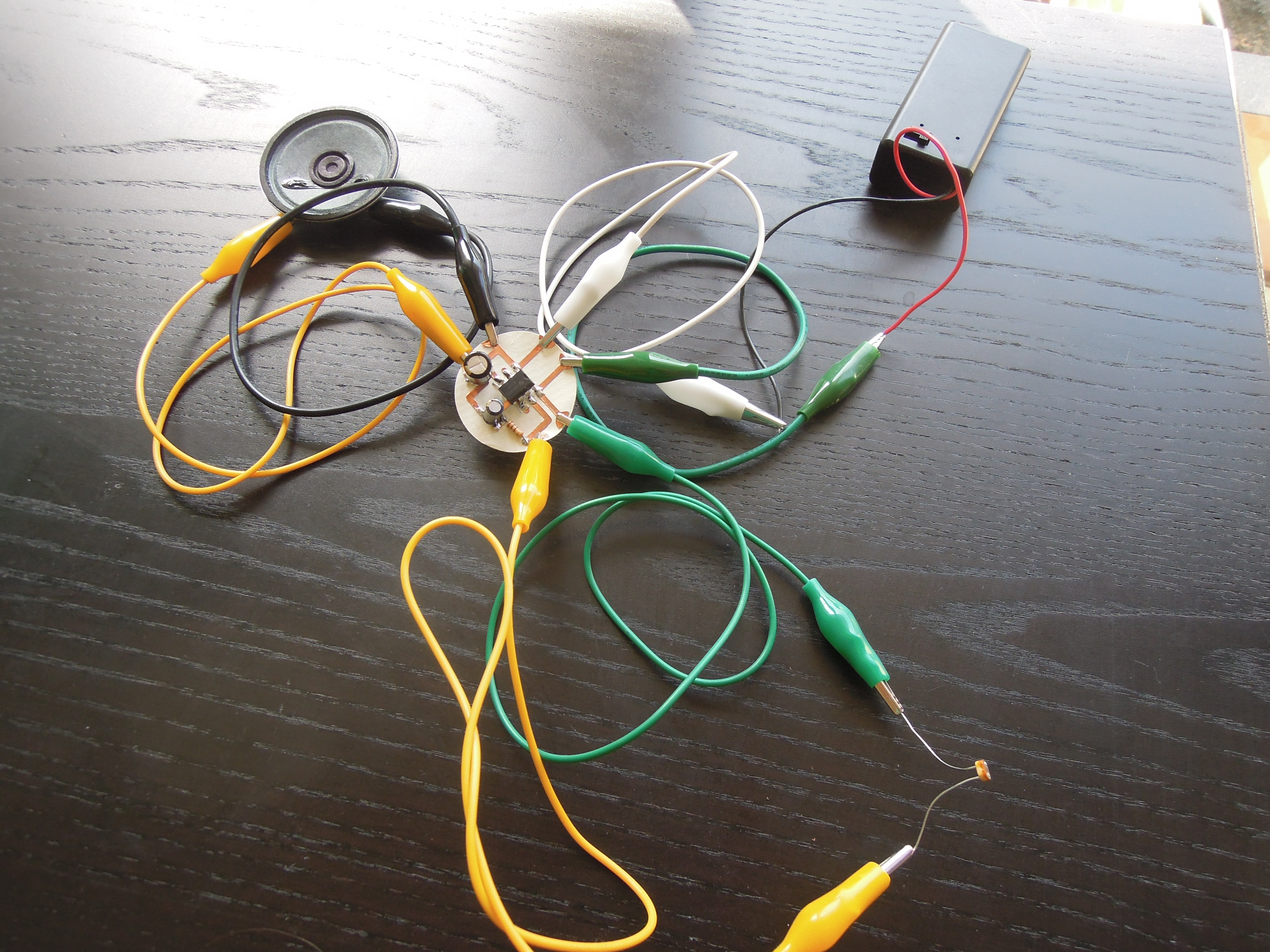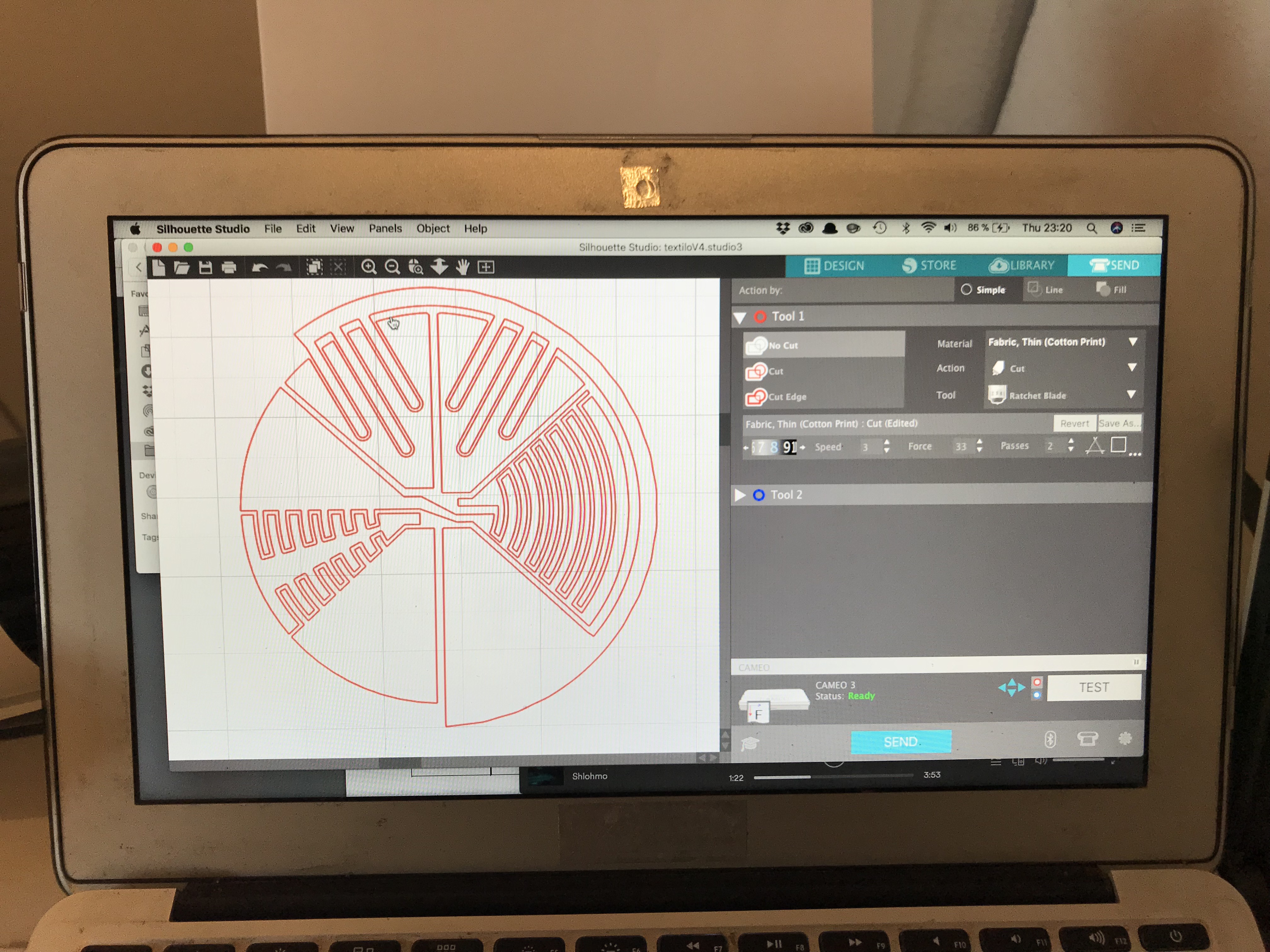Textilo is a simple board in fabric with an oscillator circuit made with a couple of components and a 555 timer. The purpose of this board is to allow people to have a small board ready to use to make some experiment with eTextile.
How does textilo work?
Textilo uses a cute and popular electronic component: the 555 Integrated Circuit (IC). This amazing piece of equipment has been created in designed in 1971 by Hans Camenzind. The standard 555 package includes 25 transistors, 2 diodes and 15 resistors on a silicon chip installed in an 8-pin mini dual-in-line package (DIP-8).
Wikipedia has a great page about it: https://en.wikipedia.org/wiki/555_timer_IC
When used in ‘astable’ mode, the 555 IC becomes an oscillator, capable of generating a specific frequency as an output of a variable resistance place as an input.
The 555 is very tolerant in terms of voltage, it can receive from 3 to 15 volts. It outputs a maximum of 2,7 volts approximatively. This means you can directly connect low power actuators such as speakers but not an LED or a motor which will require an additional (simple) circuit. You can use a jack to plug your textilo in the soundcard of your computer, making it a very simple & cheap interface to control stuff with it!
How to ‘program’ textilo ?
Well, textilo is not ‘programmed’ with software but with specific hardware configuration. It means that you do not need to input ‘code’ to textilo but you have to configure it by placing specific electronic components at its pins. The values of these different components will impact the way it behaves, hence « predicting » its future state. In a way, this is a kind of hardware or analogue ‘programming’ but with no text or code input.
Can i create my own sensors and actuators for textilo ?
Absolutely! Check out the amazing repository of inspirations at Hannah’s & Mika’s fabulous website http://www.kobakant.at/DIY
I want to share & credit other works, how can i do ?
Textilo is free hardware (GPLv2) & creative commons content (CC0, CC-BY-SA 4.0). This implies you have to credit & mention the files & examples in your future creations, presentations, workshops & classes. A simple link to this GitHub page is a good start ^ ^
Next step is Documentation, taking pictures of your works, creating tutorials for others and sharing the files with free licenses so that people can understand and remix them. Recent theories insist on how we deeply learn by sharing . Documentation is the way to reflectively re-organize our knowledge. Sharing puts us in the position of thinking towards how others will perceive our work, allowing a « perspective shift » which is definitely worth many points of IQ !
Do you organize events related with textilo ?
The first textilo event happened at DataPaulette in July 2015. Textilo will then be part of the Etextile Summer Camp (Swatchbook entry) and Pa-F philosophy week workshop on hands-on metaphysics.
This first version of the textilo was developed in collaboration with JB Labrune

